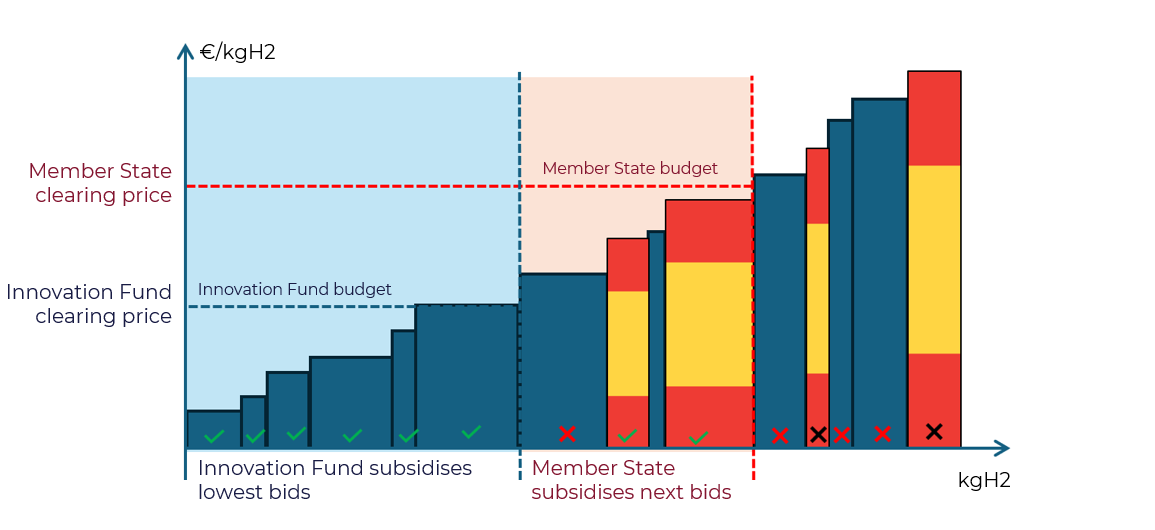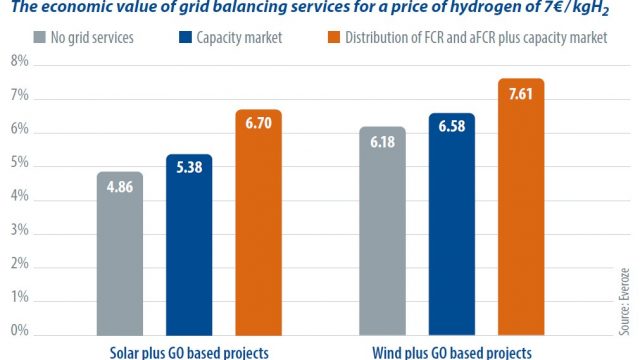Auctions as a Service
“Auctions-as-a-service” offers a fast track to meet EU green hydrogen targets, but what exactly is it and how does it work? In her latest article, Everoze partner Madeleine Hill discusses opportunities for developers and governments to come together to give projects a better chance of receiving funding, motivating developers to put forward more projects with the confidence that their country is backing them.
The EU’s Innovation Fund launched the first round of the hydrogen subsidy auctions last November, putting up € 800 million for projects in need of financial support which are otherwise technically and commercially sound. Bids will be placed based on a fixed price premium in €/kg of RFNBO (Renewable Fuels of Non-Biological Origin) hydrogen which will be awarded in addition to market revenues for a guaranteed period of 10 years of operation. As part of the initiative, the concept of Auctions-as-a-service was raised, designed to further the impact of this funding scheme and encourage national governments to put their money where their mouth is.
An extraordinary effort is needed from all parties involved in these projects. Developers must get a sound business plan together for a financial institution to back with a letter of intent to submit with their application. Then the Innovation Fund team will review all the applications for this auction to have the successful projects ready to sign Grant Agreements before the end of 2024.
The applications will either pass or fail, based on a strict (but clear) set of criteria, then those that pass will be ranked by bid price from lowest to highest. The budget will then be assigned starting from the project with the lowest bid price until it is exhausted. This is expected to occur quickly, even the fund have acknowledged that the €800 million is clearly insufficient for the anticipated demand. Many sound projects will likely miss out.
This is where the auctions-as-a-service system kicks in. Instead of letting the combined effort of so many parties go to waste, national funding can be used to support the projects within their territories that missed out on the main pot. Valuable administrative effort is saved, governments can prove action towards their hydrogen goals, and projects receive the crucial funding needed to get off the ground. Win-win.
Let’s take Spain as a good example where a clear advantage presents itself. RNFBO hydrogen needs cheap, renewable electricity and Spain has vast solar and wind resources to produce it. As an added bonus, state funding for renewable energy power plants (for plants operational before 2028) is not considered cumulative and so it will be allowed as part of the application. Cheap electricity means lower bid pricing. Lower bid pricing means higher chance of success.
But even if Spain get a few projects through the Innovation Fund, they are likely to have a number of applications which pass the criteria but don’t get into that first pot. This is where the Spanish government could mobilise their funding and sweep up the remaining national projects through auctions-as-a-service. These projects will have already passed the criteria of the Innovation Fund – so it’s a safer bet.
The graph shows just how this works. The Member State here is Spain, but it could be any other. On the blue left hand side, the Innovation Fund budget is exhausted by the projects with the lowest bids. The clearing price is set by the last bid to make it into the budget. The middle red block is the Member State budget, where projects located within that territory are assigned in ascending order, as before. Some projects may still fall outside of this additional budget, as the bid price continues to increase, but the key is that two more Spanish projects can now get off the ground.
Germany have already shown their support by assigning €350 million from their national budget to the project that fall outside of the initial funding from the EU. This is a good sign for German hydrogen development. It gives projects a better chance of receiving funding, motivating developers to put forward more projects with the confidence that their country is backing them.
According to CINEA’s Info Day held at the end of November, auctions-as-a-service will not be included in the pilot auction but will be brought in for subsequent rounds based on the results of the first pass.
As an observer, this feels like a huge opportunity for developers and governments to come together to achieve their respective goals. If other countries can follow in Germany’s footsteps and commit national funding, the renewable hydrogen industry will get a real boost of confidence (and financial support).
Let’s see who makes the most of it.







